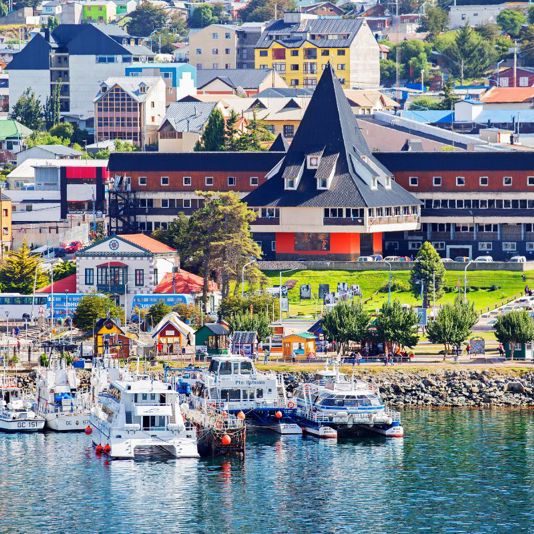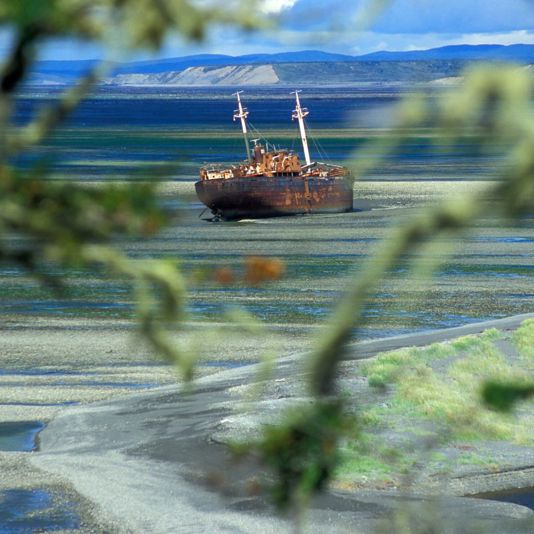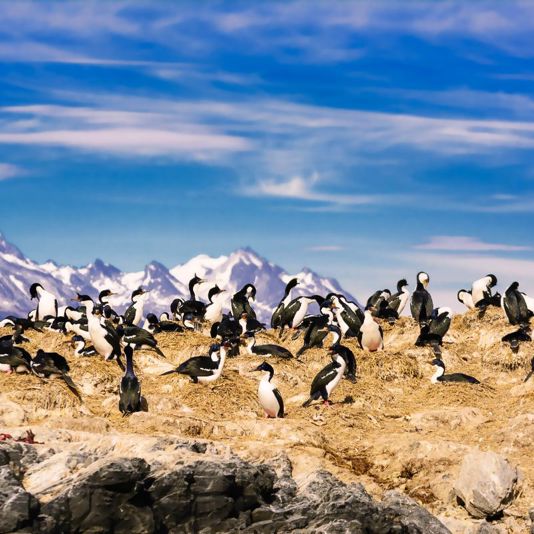Ushuaia is a small resort town in Argentina, located in the Tierra del Fuego archipelago. It is the southernmost part of South America, called "The edge of the world".
Ushuaia is a small resort town in Argentina, located in the Tierra del Fuego archipelago. It is the southernmost part of South America, called "The edge of the world".

Located in the Beagle Strait, Ushuaia is also the southernmost city in the world. Its past is an eventful one: it was a stronghold of Native American rebellion, a place of exile, and a naval base for the Argentine armed forces. Nowadays it is a popular tourist center with a developed infrastructure, a lot of restaurants, hotels, and casinos.
Also Ushuaia is the main starting point for tours to Antarctica, so there are always a lot of enthusiastic polar explorers and a lot of "special Antarctic" stores.
At the airport of Ushuaia our staff members welcome you and provide a transfer to the sailing boat. After embarkation, you will meet our captain and other trainees.
Things to do after you board:
– Check your cabin
– Tour the boat
– Have a safety drill
The Legend of the Yámana Tribe and the End of the World
Long ago, in the land of fire and ice, the Yámana tribe lived in the southernmost part of the world, in the place now known as Ushuaia. They were a peaceful tribe, living off the bounties of the sea and the land. They were also known for their great canoe-building skills, and their canoes were said to be able to withstand even the roughest of storms.
One day, a great flood came and threatened to destroy their village. The Yámana people prayed to their gods for help, and the gods answered their prayers by creating a great wall of ice to hold back the floodwaters. The wall was so tall and so wide that it stretched from one end of the earth to the other, and it marked the end of the known world.
The Yámana people believed that the wall of ice was the end of the world, and that beyond it lay nothing but darkness and chaos. They called this place "Hain", the land of the dead. The tribe feared that if they ever crossed the wall, they would be lost forever.
But one day, a young Yámana man named Jemmy became curious about what lay beyond the wall of ice. He asked the elders about it, but they warned him that he would bring great misfortune upon himself if he tried to cross it.
Despite their warnings, Jemmy decided to build a special canoe that would be able to withstand the freezing waters and the treacherous currents. He set out on his journey, determined to see what lay beyond the end of the world.
Days turned into weeks, and Jemmy traveled farther than anyone ever had before. He encountered fierce storms and freezing temperatures, but his canoe held strong. Finally, he reached the end of the wall of ice.
To his surprise, Jemmy found a land of great beauty and wonder, filled with towering mountains, sparkling lakes, and lush forests. The land was rich in resources, and the people who lived there were friendly and welcoming.
Jemmy returned to his village with tales of the land beyond the end of the world, but the elders refused to believe him. They saw his curiosity as a sign of disrespect for the gods, and they banished him from the tribe.
Jemmy spent the rest of his days exploring the unknown lands beyond the wall of ice, and he became known as a great adventurer and explorer. He never forgot his people, however, and he often sent messages back to the Yámana village, urging them to join him in exploring the wonders of the world beyond their village.
Today, the port of Ushuaia is a popular destination for adventurers and explorers, who come to see the beauty and wonder of the end of the world, and to pay homage to the brave Yámana people who first discovered it.



